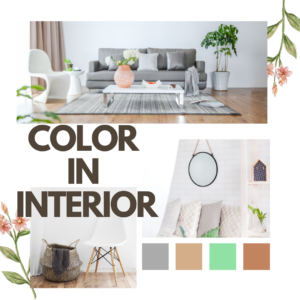
You’re a big fan of color. You’re aware of its strength and appreciate it. If you are left to your own devices to pick paint for an accent wall, a full room, or worse, your entire house, it makes you want to give up and it’s too overwhelming. Well, you came to the right spot, today I would like to break it down for you, to comprehend the idea of color.
More than just a visual experience, color has a deeper meaning. It’s also a psychological impact that can have a profound effect on mood and emotion. You can project your personality and create the mood in any room of your home with this basic method of communication. Even though color reactions might be subjective, some hues seem to provoke certain reactions. While bright hues such as crimson, yellow, and orange may evoke thoughts of warmth or aggression, cool hues such as green and blue can induce feelings of calmness or depression.
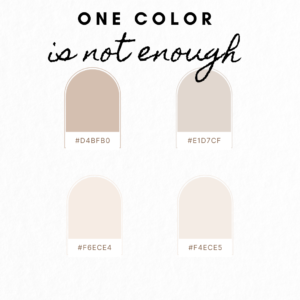
One color is not enough without a doubt as one is the loneliest number. In the world of interior design, there are a lot of misconceptions that may make it difficult to pick and apply the correct colors in your house. As a rule, people believe that picking a basic one color for your house is simple and safe. It’s hard to believe that neutral colors may be easy to work with because they appear so uncomplicated. When you understand about undertones and why those neutrals are more sophisticated than you imagined, you can easily dispel this fallacy.
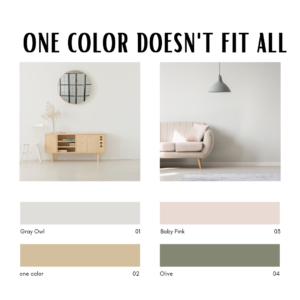
One color doesn’t fit all. Even though using the same color in all your rooms may seem like a fantastic (and convenient) idea for many reasons, the fact is that no paint color behaves the same way in every area. As a matter of fact, due to undertones and other variables, the hue might shift from one part of the room to another. Because of its chameleon nature, the motto “one color fits all” has a serious flaw.
It’s easy to change the color scheme from one room to another when you have a single paint color to choose from. Nevertheless, a single color may not have the same impact in every environment. As each space is unique, it is important to take into account factors such as illumination, area, and natural light, among others.
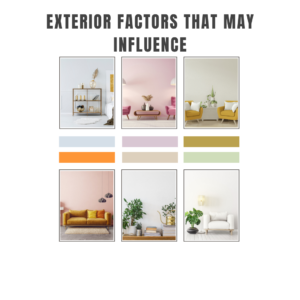
Exterior factors that may influence. Here is one of the crucial parts of adopting one neutral hue throughout a property. The color reflected into the windows from brilliant green vegetation outside, red clay soil, or the blue/gray of adjacent water may affect everything.
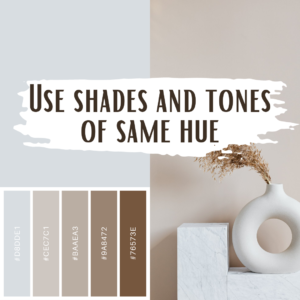
Use shades and tones of same hue. So, instead of painting the entire house in the same color use different tone of same hue. You can’t use the same hue across your entire house, but it shouldn’t be the dominant wall color in every room. Think about using a different shade of the same color throughout your home, rather than making it the focal point, or placing it in other key locations around your home. Hue consistency may be achieved in your house by using different tones of the same color or just using it in certain areas.
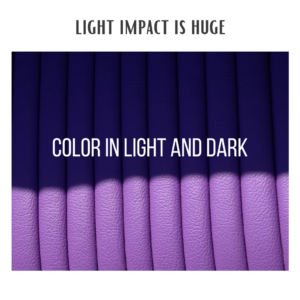
Light impact is huge. Researchers estimate that we currently spend 87 percent of our lives indoors, whether it is at work or at home. Poorly lighted, uninviting settings may make people miserable. Even though some professionals think it’s trivial, the art of interior design plays an essential role in this. For example, artificial lighting, natural light, proportions and materials may all be altered by an architect when creating an interior. These factors will all influence the experience that people will have in the room.

Textures plays a vital role. Some components alter the sense of a room without modifying a single wall, allowing for the desired spatial experience to be achieved. Paint, various materials, and different coatings can all be used to achieve this. A room’s appearance can be improved by using lighter and cooler shades of paint. As a result of their darker hues, they look smaller and more closed to the eye than they actually are. While the arrangement of colors and textures in an environment may alter one’s viewpoint, it may also draw attention to a specific piece.
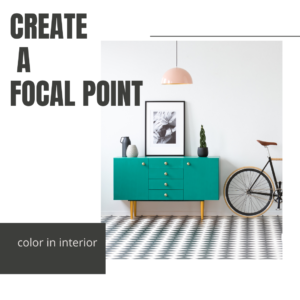
Creating focal points. Utilizing color to give your house the right appearance. Create focal points in your interior space by using materials such as stained wood and textured molding as well as artwork, decorations, and more. This can assist give your area more definition and depth, increasing the apparent size and general layout of your rooms.
There are many different ways to play with color, whether you want to be playful and youthful, or take a more serious approach.

Always choose colors and patterns that complement one another. Color provides your interior area a smooth and continuous aspect that is also extremely beautiful. Remember to put in other colors that assist emphasize the primary color choice whether you decide to paint your complete home with one color or a variety of hues of one color. In addition, using a single hue throughout your home may assist “link” different sections of your home so that everything flows together, providing your interior space greater energy flow for improved mental health and mood.
Color has a significant psychological influence. Take the time to carefully design your interior or exterior color scheme, and you may give your home a distinctive charm that you won’t find elsewhere.
Comments will load here